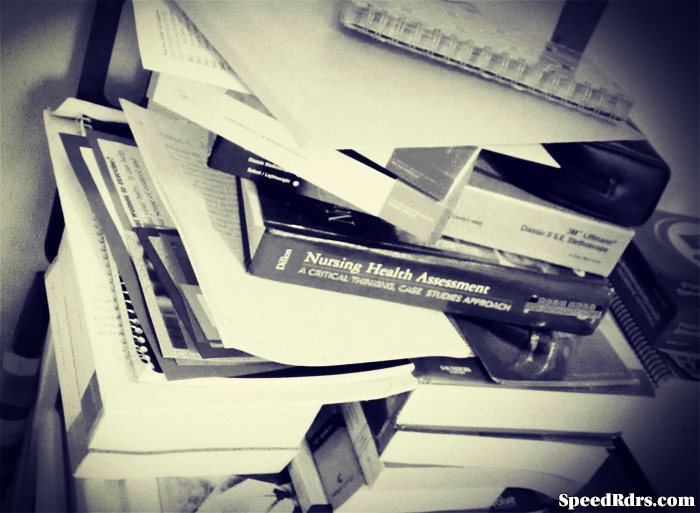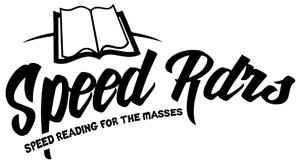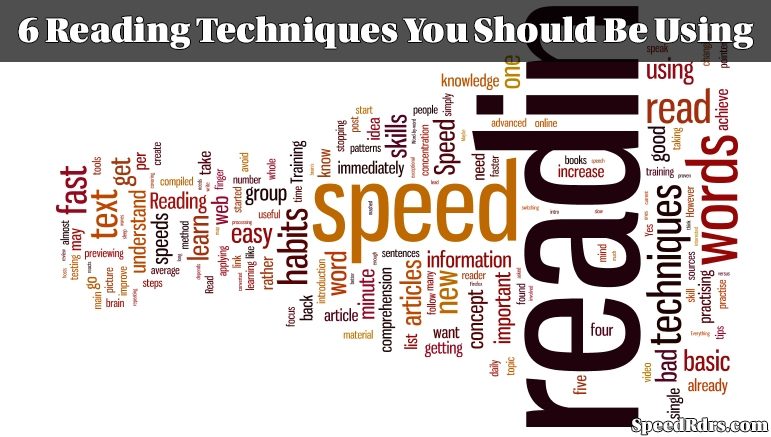Reading is something that is taught to us at an early age, so to say you cannot speed read means you do not want to put the time into practicing.
Regardless if you are in school or not, being able to read in a timely manner and retain the information is something that everyone needs to learn how to do.
It is extremely useful to skim something to extract one piece of information, scanning a document for something that catches your eye on a menu, or even doing some active reading to brush up on a hobby you are into.
6 Reading Techniques You Should Be Using
Being able to figure out which type of reading you need to do is easier than you may think. You probably do a lot of this subconsciously, but being able to “brush up” on these skills will help you retain more information and speed up things in your everyday life.
Skimming
Skimming a document gets you the gist of what you are reading.
When you start skimming what you are reading, you are speeding up the process of finding the main point. I personally like to use skimming on articles and book descriptions to see what catches my eye.
When you skim something, your reading speed is increased, but your comprehension diminishes.

Tips:
- Practice reading magazine articles or recipes.
- Skim a short story and try to recite the most important parts you’ve picked up.
Scanning
Scanning through an article or a menu is something that you already can do, but with these tips, you’ll be able to find exactly what you’re looking for without having to waste your time on other things.
Writers who encourage scanning (like myself) will split up articles or books in such a fashion you can easily see the separate sections and where you should (or should not) read.
Tips:
- Look for separate headings in writings.
- Practice finding words in the dictionary.
- Practice finding specific sets of information for your work or school.
Intensive
Ah, the type of reading you do in school. In-depth super slow reading that you have to sometimes dredge through.
If you need to recite a passage or something else that takes a lot of comprehension, intensive reading is what you’ll have to do.

Tips:
- Practice by reading material that you are interested in, but ignorant about.
- Write down parts of the passage you feel is important. You will learn how to apply and remember items.
Extensive
Extensive reading… something only a few people do.
Extensive reading is when you read for pleasure like reading a great fiction or erotic novel.
Tips:
- Learn how to speed read – it will help save time and make reading more enjoyable.
- Try to learn words through context – the fewer times you stop to look up a word, the better.
- Stay focused – when you divert your attention, you are losing out on the enjoyment.
Active Reading
Active reading is just how it sounds, active. You are going to be maybe highlighting or writing down points.
This technique is great for an in-depth and usable knowledge of a topic. You can get the main points and skip over some of the details until you are ready for them.
Tips:
- Start reading up on a hobby you enjoy.
- Pick up a new hobby and immerse yourself in it.
- Practice skimming or scanning and then re-read something that caught your attention with an active reading style.

Structure, Proposition, Evaluation
This type of reading is quite a different style reading than the others and will require the most practice to use it properly. Mortimer Adler mentioned this technique in his book How to Read a Book.
It is applicable mostly to non-fiction and you read using these 3 patterns:
- Studying the structure of the book – how is the book laid out?
- Studying the logical propositions made and organized into chains of inference – how does the book read and get to the point?
- Evaluation of the merits of the arguments and conclusions – Is what you read true? Try to apply it here to everyday life to fully learn the topic.
Tips:
- I highly encourage you to learn a new hobby or topic. Get active with your reading and apply the information to things you already understand.
- Take notes of the book or your thoughts to help you find the patterns in the book.
Conclusion
Being able to read, comprehend, and apply in your day-to-day life is important. Learning when to use each type of reading will help you in your everyday life.
Learning which type of reading you should implement and where will help you hone your skills in speed reading and in retaining information.
If you’ve implemented any of these techniques into your everyday routine, let me know below how it has helped!


Who is the author of this article?
I’m sorry for such a long delay — I’ve been dealing with a lot of family emergencies and unhealthy family members. I am. Why do you ask?